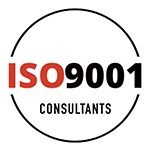Understanding what a supplier audit is and how it fits into the bigger picture of quality management is significant. For many businesses, especially those in Sydney, ensuring their suppliers adhere to quality standards can make or break their own product quality. The ISO 9001 Supplier Audit provides a structured way to review and evaluate your suppliers, ensuring they meet your quality requirements. These audits enhance the overall quality control process and improve relationships with suppliers by setting clear expectations and providing a reliable framework for follow-up.
Conducting a successful ISO 9001 Supplier Audit offers several benefits, which include improving the end product and maintaining consistent quality. These audits help businesses pinpoint any areas of weakness in their supply chain, allowing for improvements and ensuring that quality is never compromised. In turn, this can lead to higher customer satisfaction, less downtime due to quality issues, and potentially lower costs due to a more efficient supply chain.
Understanding ISO 9001 Supplier Audits
ISO 9001 Supplier Audits are a vital part of quality management systems used to examine and evaluate the capabilities of suppliers. Essentially, these audits ensure that suppliers adhere to the required ISO 9001 standards. They check whether the supplier’s processes are capable of consistently producing products or services that meet your expectations and requirements.
Conducting these audits helps businesses achieve several objectives:
1. Improve Product Quality: Identifying and rectifying any sub-par processes or practices within the supplier’s operations.
2. Strengthen Supplier Relationships: Enhancing trust and collaboration through transparent and efficient quality controls.
3. Cost Efficiency: Minimizing defects and hence reducing rework or scrap costs.
4. Risk Management: Detecting potential risks before they affect your business operations.
Consider a scenario where a business in Sydney relies on multiple suppliers for its manufacturing parts. Regular ISO 9001 Supplier Audits ensure that each supplier maintains the prescribed quality levels, safeguarding the business from unforeseen quality lapses. Thus, these audits help create a seamless flow of quality products, preventing disruptions in the production process and ensuring customer satisfaction.
Preparing for a Successful ISO 9001 Supplier Audit
Preparation is key when it comes to successfully carrying out a supplier audit. Here are several steps to consider:
1. Set Clear Objectives: Determine why you’re conducting the audit. Is it for routine quality assessment, a response to a specific issue, or part of a supplier selection process?
2. Thorough Documentation: Make sure you have all necessary documents prepared. This includes the supplier’s quality manuals, process documents, and any relevant certifications or records.
3. Team Engagement: Ensure your audit team is well-versed with the audit procedures and the specific goals of the audit. Everyone involved should be clear about their roles to avoid confusion.
4. Communication: Inform your suppliers about the audit. Detail what aspects will be audited and how it benefits both parties. Clear, upfront communication can ease any potential tension and pave the way for a more cooperative audit.
5. Checklists: Use comprehensive checklists to systematically cover all audit areas and ensure no points are overlooked.
Preparing thoroughly maximizes the effectiveness of the audit and can lead to improvements that benefit both you and your suppliers. It sets a solid foundation for the audit, showing your commitment to maintaining high-quality standards within your supply chain.
Conducting the Audit
Once you’re fully prepared, it’s time for the actual audit process. This stage involves a meticulous review of the supplier’s processes to ensure they meet ISO 9001 standards. Begin by introducing the audit team to the supplier and clearly outlining the goals of the audit. Make sure everyone understands the scope and objectives.
During the audit, focus on these key areas:
1. Quality Management System: Assess whether the supplier’s quality management system aligns with ISO 9001 requirements. Look for evidence of effective quality control practices and procedures.
2. Product or Service Quality: Evaluate the consistency of product or service quality. Check that products meet specifications and that the processes for achieving this are well-documented.
3. Operational Processes: Examine the efficiency and standardization of the supplier’s operational processes. This includes production lines, order handling, and inventory management.
Effective communication is vital throughout the audit. Maintain a collaborative approach with the supplier, asking questions and inviting clarification. This ensures a smooth process and builds a partnership mentality, which is more likely to lead to improvements.
Post-Audit Activities
The audit does not end once you’ve reviewed the supplier’s processes. Post-audit activities are crucial for leveraging findings to improve both parties. Start by reviewing the audit report and sharing it with the supplier. Transparency strengthens relationships and sets the stage for collaborative improvements.
Create an actionable plan based on the audit results. Identify areas for improvement and suggest practical changes. Consider developing a timeline for these changes and set milestones to track progress. This demonstrates commitment to not just identifying problems but solving them.
Continuous monitoring is key. Schedule follow-up audits to ensure that improvements are being implemented effectively. Keep detailed records of all audits and reviews, as this documentation serves as a valuable benchmark for future audits and is integral if any discrepancies arise later.
Summing Up Your ISO 9001 Supplier Audit Journey
In wrapping up your audit journey, remember that ISO 9001 Supplier Audits are invaluable for strengthening the quality frameworks of your business. They safeguard the quality and reliability of the goods and services you provide by ensuring that suppliers meet rigorous standards.
By embracing the audit process, businesses in Sydney can usher in a new era of quality assurance and operational efficiency. Regular audits drive continuous improvement not just in supplier processes but within your own operations as well. It’s all about creating a balanced partnership that prioritizes quality and fosters sustained excellence in product delivery, paving the way for longstanding positive relationships with your suppliers.
To strengthen your quality control processes and supplier partnerships, consider conducting an ISO 9001 Supplier Audit. This process ensures improved product quality and operational efficiency. Let ISO 9001 Consultants guide you through the necessary preparation to help your business maintain high standards and achieve strategic goals.








Users Comments
Get a
Quote